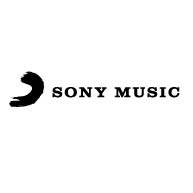In what ways does your media product use, develop or challenge forms and conventions of real media products?
Our media product was created with precise planning and research. It was important for us to choose the correct; location, costume and actors right to relate to that of real media products that we researched.
When researching into artists music videos it is clear that the fundamental important success of an artist is the fans- and showing the fans what they want to see.
We began our A2 coursework by mind mapping initial ideas with the rest of my group and researched into a specific target audience: 16-20 years old. In response to the information I was aware of about real media products; I thought it was important to find out what people in this age category would be interested in, to do this I created a music questionnaire for my fellow piers and older students to fill in.
Here is what I found out ;
As a result of this questionnaire; 40% choice Indie/alternative as their prefered music choice over R&B, Mainstream pop, Rock, Metal and Dance/techno.
89% of the class; watch music videos to see the artist and how interesting the video was.
Our response:
Brainstorming Locations
We brainstormed locations and did a recce to test specific locations such as;
the beach,
field,
arcades,
cafe,
bathroom.
We decided that the beach would be a perfect location to be the main fundamental place to film as it represented the ‘end’, the water/sea created a sense of the end of the line meaning the end of the relationship.
Due to our previous research into real media products we were aware that by giving us this main concept we were able to create a mise en scene that fulfilled the meaning behind the lyrics.
Our inspiration for MISE EN SCENE;
Rihanna - We found love
Rihannas -We found love video was a real media product that was a huge inspiration for our video.
It creates a dark mise en scene and follows a narrative from start to finish, we annaylised the video and created some of our effects and our story line to be like this real media product.
Here is what we did;
Lana Del Ray-Video Games
Lana Del Ray’s video directly inspired me to experiment with the idea of the old fashioned film running throughout: which I attempted to do in Final Cut Pro when editing certain shots together = this allowed me to enhance and further develop my skills on Adobe Premier.
How has this planning and research helped us create a media product that uses forms and conventions of real media products?
Development;
We began to develop our media text once in planned locations, we took several shots of the same location so we could have plenty material when we headed to the editing stage of our coursework.
With the use of digital technology we had on offer we began to develop forms and conventions of real media products. Please click on the link below to see our summary of how digital technology helped us.
http://prezi.com/pzd8ynn1h9e1/copy-of-development/
I believe we have created piece of coursework that developed conventions of real media due to the help of the technology (as stated in the prezzie above). Here is a short section of our video that is evidence of how we developed this;
(Insert exported video)
How does our video challenge forms and conventions of real media products?
Semeotic codes and theories;
Our coursework also challenges because it has conventions of real media texts by having semiotic codes and follows theories.
The Todorov Theory- How our video fits this criteria.
The semiotics we included in our piece;
THE LEVI-STRAUSS THEORY:
Overall;
all of these elements of our coursework due to research and planning, structure and creativity have all combined to create a piece of coursework that I think has used, developed and challenges forms and conventions of real media products!!
Finally our video coursework is submitted below- please take the time to watch our final piece. Thankyou;
 After researching different album covers I needed to decided on a record label to distribute our aritist. After researching a number of different companys i found sony music:
After researching different album covers I needed to decided on a record label to distribute our aritist. After researching a number of different companys i found sony music: